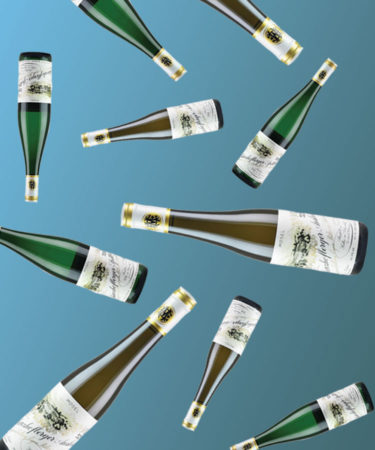If Riesling is Germany’s great gift to the wine world, then Weingut Egon Müller is Tiffany’s.
Founded in 1797 in the Saar district of the Mosel region, Egon Müller produces some of the world’s finest Rieslings, with aging potentials that are easier measured in decades than years, and prices that rival any of the world’s most prestigious wineries.
From venerable vineyards to the world’s most expensive white wines, here are eight more things you should know about Weingut Egon Müller.
Egon Müller ranks among the world’s most prestigious winemaking families.
Established in 1993, the Primum Familiae Vini, or “First Families of Wine,” is a 12-strong group of the world’s most prestigious winemaking families. Weingut Egon Müller is the only German member of the group, which includes the likes of Vega Sicilia (Ribera del Duero), Château Mouton Rothschild (Bordeaux), Tenuta San Guido (Tuscany), and Maison Joseph Drouhin (Burgundy).
Inclusion in the Primum Familiae Vini is dependent on a winery being a leading producer in its region, and new members are only accepted by unanimous decision.
There are many Egon Müllers.
Egon Müller IV is the current winemaker and owner of Weingut Egon Müller. Born in August 1959, he is the fourth Egon Müller in the weingut’s (winery’s) history. He is also the sixth generation of the family to own and run the estate, after his great-great-great-grandfather Jean-Jacques Koch bought it from the French Republic at the end of the 18th century. He also has a son named, you guessed it, Egon.
Egon Müller makes several styles from a single grape.
Weingut Egon Müller produces wines using only one grape variety, Riesling. But it manages to release a number of different bottlings every year by harvesting grapes at different times, and vinifying them to a range of different sweetness levels, from off-dry kabinett to the sumptuously sweet trockenbeerenauslese. The latter style, along with the winery’s beerenauslese release, is dependent on vintage conditions being suitable for Botrytis cinerea (noble rot) to infect grapes without turning them moldy.
Its grapes are grown and tasted around the world.
Egon Müller produces Riesling in multiple countries. In Slovakia, Egon Müller IV collaborates with Miroslav Petrech to make top-class Riesling under the Château Belá label. And in the Adelaide Hills of Australia, he also works with Michael Andrewarta of East End Cellars to release a dry Riesling called Kanta.
It owns part of a prestigious German vineyard.
Egon Müller owns 21 acres of the 70-acre Scharzhofberger, one of the world’s best Riesling vineyards. It’s located in Wiltingen, on the Saar river, on a slate-rich, south-facing slope. Classified as an ortsteil (“district”), the Scharzhofberger name can be used on the labels of wines made there, much like the grand cru sites of Burgundy.
The world’s most expensive white wines come from Egon Müller.
Egon Müller’s Scharzhofberger Trockenbeerenauslese sits in third place on Wine-Searcher’s list of the World’s Top 50 most expensive wines. It’s the highest-placed white wine on the list, and its bottles boast an average price of $13,670 and a max price of $32,897.
It’s sweet, but has a wild side.
Egon Müller ferments and ages its wines in thousand-liter old oak foeders (casks), as is traditional in the Mosel region. Where possible, the winery uses only indigenous yeasts for fermentation. This almost always means that not all the sugar in the must is converted to alcohol, but the naturally high acidity of the Riesling grape balances out any residual sweetness in the final wines.
Egon Müller hasn’t seen a bad vintage in decades.
In a wide-ranging interview with Enology International’s Jordan P. Ross, Egon Müller IV described 1987 as “the last bad year” his winery experienced. Despite this, he said that the ancient vines and slate-rich soils of the Scharzhofberger vineyard still provided “very flavorful wines” that year.
